What is RTLS?
Real Time Location Systems (RTLS) are solutions which uses technology to automatically identify and track the location of people or objects in “real time” through your facility, generally indoors, but sometimes outdoor as well.
What are the components of an RTLS system?
Real Time Location System (RTLS) always has three components:
- Tags/transponders with a unique number used to identify the individual person or object.
- Readers/receivers to hear the tag signal.
- Software to coordinate the location data received by the readers.
The transponder sends its signal (unique ID) to receivers placed at specific locations in the designated area. Similar to the transponder’s unique ID identifying the person or object, each receiver uniquely identifies its location. When the receiver picks up a signal from the transponder, it sends this data to the software program. The software interprets this information and combines the unique ID, the location of the reader, and the date/time the signal was recorded. The general value of the real-time location system (RTLS) lies in the ability to time-stamp the location of a unique ID as that unique ID moves within the system’s defined area.
There are a broad range of unrelated technologies which companies bill as RTLS. Some of these technology stacks include:
- BLE – Bluetooth Low Energy
- 433MHz Active RFID
- WIFI Based
- Ultra-Wide Band (UWB)(3.1 – 10.6 GHz)
- Infrared
- Ultrasound
- Passive UHF RFID
All of of these technologies, with the exception of Passive UHF, use tags with batteries. These batteries can last up to 5 years – but generally last for about 2 years.
How Do RTLS systems Work?
The tag signal is received by multiple active readers. With the tag signal, the reader also captures the strength of the received signal, called the RSSI, or the relative signal strength indicator. The graphic below shows an example of 4 readers receiving an active tags’ beacon signal. Based on RSSI, it is possible to locate a tag in the room based on the signal strength. This is called triangulation, because in theory you only need 3 readers to locate a tag.
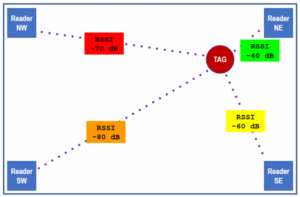
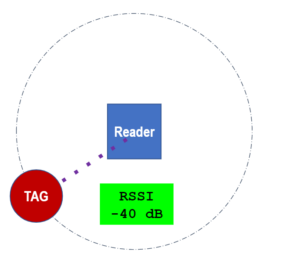
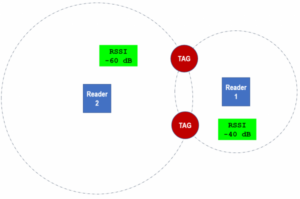
With three or more readers, you can triangulate the actual tag location, as is shown in the illustration below. Of course, tracking the tag location in the real world is more difficult as the correlation of RSSI to distance is subject to noise, there are reflections or the signal, and signal blockages due to building materials, people moving, and changing environments.
However, it should be understood that RSSI alone is a poor indicator of distance. Because of this, some tags, like BLE 5.1 capable tags, provide additional information, such as the angle of arrival of the signal, which can dramatically improve the location estimate of the tag.
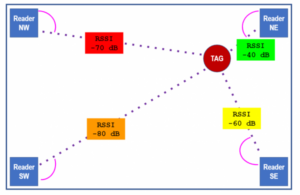
We hope this explanation of triangulation, RSSI, and RTLS has been a help for you!

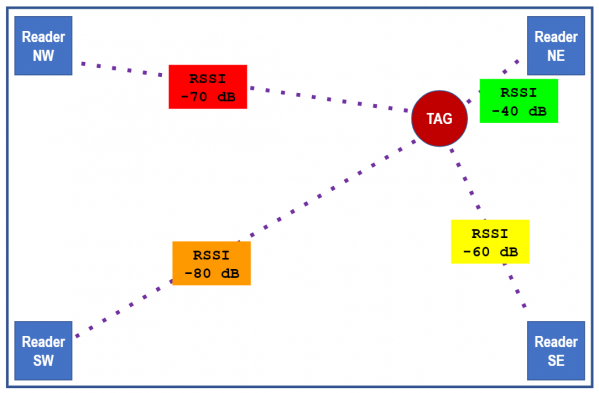
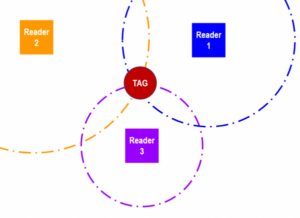
0 Comments